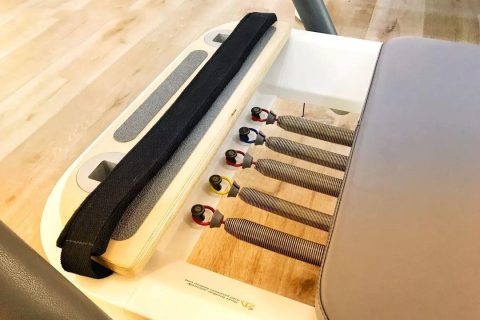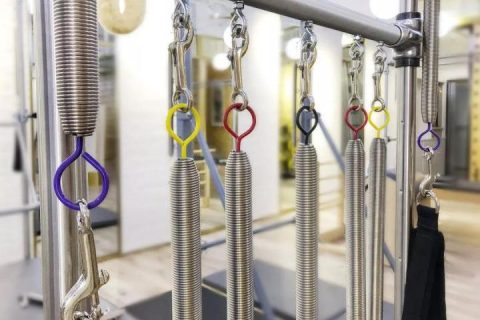During the First World War, Joseph Pilates, to allow the wounded to lie down for recovery training, installed several springs around the bed and changed the bed board into a sliding panel to help the wounded practice. Furthermore, this will become the prototype of our Pilates bed today. Pilates equipment can achieve the effect of fat loss and shaping and can also perform rehabilitation training. Use it for postural rehabilitation to help relieve low back pain and improve athletic performance.

Let me introduce the benefits of large Pilates equipment:
- Enhance muscle strength and relieve daily work fatigue.
- Burn body fat and accelerate the “manufacturing” of muscle.
- Don’t worry about overly masculine muscle lines.
- Increase bone density and reduce the risk of osteoporosis.
- Reduce muscle soreness and back pain.
- Enhance self-confidence and improve self-sufficiency.

Pilates’ beautiful equipment makes you tall and straight, with a graceful figure. It is also a lucky star for sedentary people, improving low back pain, shoulder and neck pain, and other symptoms. Restoring it during pregnancy and postpartum is even more kingly, and nothing is more suitable than it. It is not only beautiful but also safe and reliable.
What is a Pilates spring?
Pilates is a bed-like frame with a platform, called a carriage, that rolls back and forth on wheels within the frame. A spring accessory in Pilates is a Pilates spring. The carriage is attached to one end of the reformer by a set of springs. Springs provide a choice of different levels of resistance when pushing or pulling the carriage along the frame. The carriage has shoulder blocks so that the practitioner does not slip off the end of the reformer when pushing or pulling the carriage. There is an adjustable rod at the end of the spring. The force and resistance of the spring make the bracket more or less difficult to move when moving the frame, and the user can perform proper exercise on the body through the Pilates bed.


The function of Pilates spring
Currently, beginner or advanced yoga widely uses Pilates in yoga exercises. Pilates is used to improve and train a person’s strength, flexibility, coordination, and balance. At the same time, it can lead to improvements in everyday life, such as better posture, good posture, effective sports, and a reduction in body weight for many people. Pilates exercise, building muscle is the most important. Flat abs, a strong back, and a toned butt and thighs are all results of this workout. And the spring has a particular function: eccentric muscle contraction. And this is when the muscle lengthens when it resists.
Moreover, Pilates bed is a device used for eccentric contractions. Utilizing Pilates is one of the keys to achieving the muscular build Pilates is known for. The instability of the rolling carriage with springs set at different levels of resistance provides a variety of stability challenges that develop “core strength” and promote better balance. Some exercises can be more challenging and less rewarding than exercising without Pilates. And when using average springs, you must work harder to control and stabilize the movement due to the lighter weight.

In addition, muscle builders or yogis can also use pilates springs for versatility. Exercises can be lying down, sitting, standing, pulling the straps, pushing the footrests, seated on the footrests, perching on shoulder blocks, using additional equipment, inversions, sideways, and variations. In other words, spring equipment can train many parts and dynamics of the body in many different ways. Perform various exercises on a Pilates table to promote length, strength, flexibility, and balance. Most Pilates exercises involve pushing or pulling on a spring-loaded carriage or holding the carriage steady during the movement..

